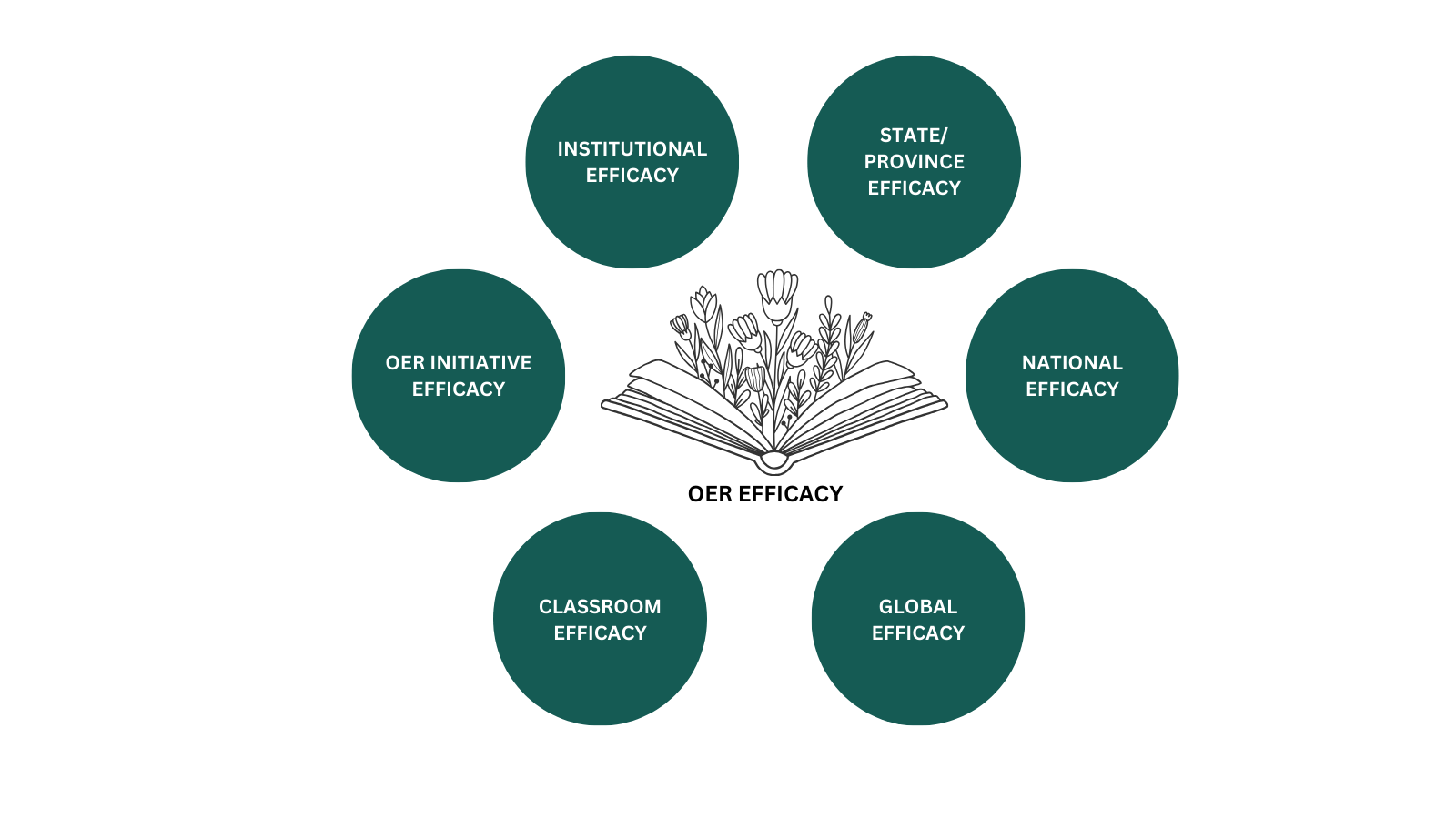Opportunities in OER Efficacy
Multifaceted & Versatile
There are multiple ways to measure OER efficacy, from the classroom level to statewide level, resulting in a multipronged approach. Please note that there may be overlap between these various levels, depending on your location or context. These are simply broad categories to help you think about different ways to measure the impact of OER at various levels of education.
How do you assess efficacy on different levels? In a classroom? As someone running an OER initiative? How can you look at efficacy at these different levels while also keeping equity in mind? Similar to above, these broad categories listed below offer some examples for you to look at to get inspiration of the different approaches to measuring OER efficacy from different regions. Depending on your unique context, some of these categories may overlap, such as the OER initiative and state/provincial/territorial levels.

At the classroom level, OER efficacy is measured based on their impact on individual students and educators. Some efficacy indicators may include improved student engagement, student sense of belonging, better learning outcomes, increased educator satisfaction, and cost savings for students.
OER initiatives are organized efforts by educational institutions or organizations to adopt and promote OER adoption. At an OER initiative level, impact can be assessed by tracking the success of specific initiatives, such as increased OER adoption rates, faculty training, and increased resource development.
Institutional efficacy evaluates the impact of OER within a specific educational institution, such as a school, college, or university. Key indicators include cost savings for the institution, student retention rates, faculty buy-in, and changes in institutional policies and practices related to OER.
In some countries, national policies and funding may support the widespread adoption of OER. National-level efficacy focuses on assessing the impact of OER on the country’s education system as a whole, including factors like equity, access, and improved educational outcomes.
Finally, OER can transcend national boundaries, and global initiatives aim to promote the creation and sharing of open educational resources on a global scale. Efficacy at the global level may involve tracking the reach and impact of OER repositories and international collaborations to improve access to education worldwide.
Media Attributions
- Levels of OER Efficacy © Kaitlin Schilling is licensed under a CC BY (Attribution) license

